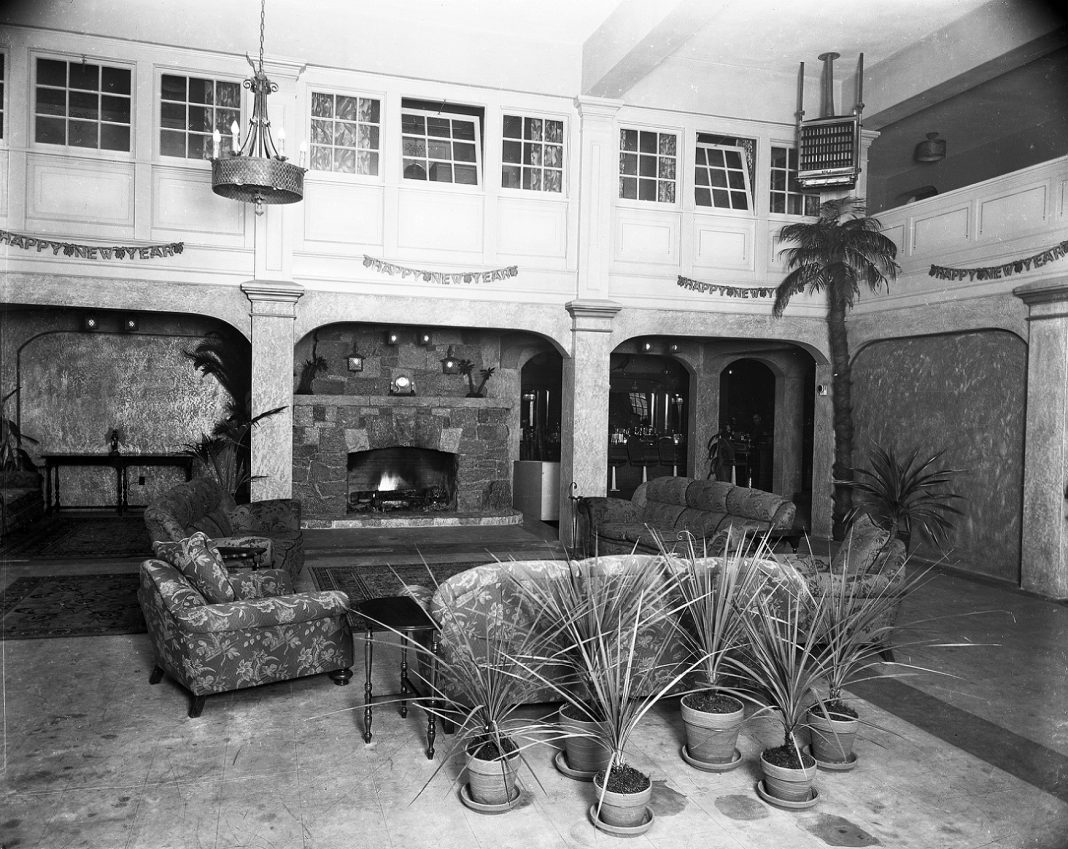On December 20, 1930, in the midst of the Great Depression, a new business opened its doors in downtown Olympia. Bright, cheerful and carefree, the Daily Olympian announced the following day that, “Madrid was transported to Washington’s quiet capitol last evening.” The Palm Grove provided an indoor miniature golf course and a restaurant for the whole family to enjoy.
 Building Olympia’s Palm Grove
Building Olympia’s Palm Grove
Plans for a new “resort” were announced on October 24, for a building currently under construction at 218 Fifth Avenue. This “Spanish-style recreation center deluxe” would be named the Palm Grove. A grand opening was planned for November 21, but was pushed back a month due to construction delays. The business venture was headed by Milo Morris and managed by Charles Allen and Robert Langridge.
Using local union labor and local suppliers, the building’s interior was a fanciful image of Spain or Latin America. Seattle’s Dwyer and Rhodes created special lighting for the cabaret and dance floor, and leaded glass stars in a black barrel-vaulted ceiling imitated the night sky, giving the interior the air of an outdoor fiesta. The lobby included a large stone fireplace and two “comfort stations” or restrooms.
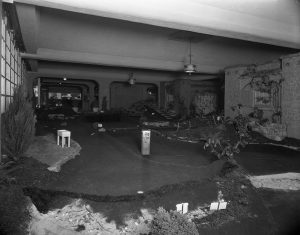
Guests at the Palm Grove could also enjoy a meal at the adjoining Rockaway Cafe. Proprietors Fred and Matilda Wren operated the restaurant, relocating from another building. They managed the fountain service and booths around the dance floor. There were also private dining rooms and a lounge on the mezzanine level where parties and clubs met.
But the center of the business was an indoor 18-hole miniature golf course. Miniature golf was very popular in 1920s America. The Palm Grove’s course was designed by C. Lyle Powell, who had planned courses in Los Angeles, Chicago, Seattle and New York City. The greens were laid by Hancock and Sperry of Spokane. As a finishing touch, palm trees were shipped from the south to give the room a semi-tropical atmosphere.
To attract customers the store had a 27-foot by 10-foot neon sign. Crafted by General Illuminating of Seattle and designed by Wade Welker, it featured two crossed red golf clubs over a base of yellow and green palm leaves below which the words “Golf, Dine, Dance” flashed. Green tubing surrounded the image.
A Night in Olympia’s History
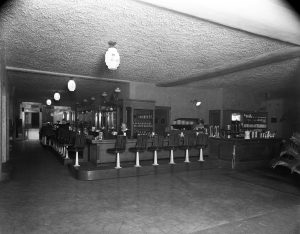
Though many attended its opening, it was a terrible time to start a business because of the Depression. Town leaders heralded the Palm Grove as hope of better times to come. Don’t worry about the economy and come to Palm Grove, urged the Modern Utilities Company in the Daily Olympian on January 9. The company had installed the “orchestrope,” a coin operated jukebox that played 21 different records.
Billed as the “Center of Play Life in Olympia,” the Palm Grove proved a popular gathering spot in the months ahead. Nathan Lynn and his Troubadours played at the opening. Starting January 10, Jimmy Mann and his Rhythm Aces performed daily dinner concerts, 6:30 to 7:30 every night. Dancing was held from 9 p.m. to 12 a.m.
The Palm Grove had no admission or cover fees, but charged couples 50 cents a dance and for food. It is unclear if there were charges for playing golf.
Olympia Community Center
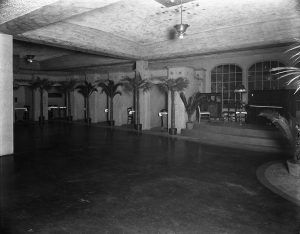
The Palm Grove billed itself as a community center. They held a “whoopee” Christmas party with Nathan Lynn and his Troubadours providing music for dancing. The Rockaway hosted a $1 holiday dinner. They rung in the New Year with a similar party. The Rockaway served both a special $1 holiday menu and a sandwich menu.
It became a popular place for groups to meet. Organizations such as Sunday school teachers, the Naval Reserve Association, Boy Scouts, Credit Bureau, Retail Board and Thurston County Democrats held banquet and luncheon meetings there. The Wanderers, a hiking club, even held their first banquet at the Palm Grove. The Active Club held a dinner dance there, playing bridge as well as golf before going to see a preview of the film “Hell’s Angels” at the Avalon Theater. Many people even had dinner at the Palm Grove before attending the 1931 Legislative Ball at the Capital Park Auditorium.
It was a popular place to meet for women’s groups in particular. The Business and Professional Women’s Club, for example, held regular weekly meetings there. 79 women attended a founder’s day luncheon for Washington State PTA at the Palm Grove. Both a breakfast of the Washington State American Association of University Women convention and a wedding breakfast for Virginia Sawyer and Harvey Coolen took place at the venue.
The End of the Palm Grove
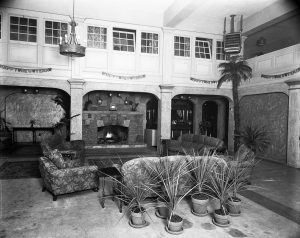
The Palm Grove was unable to weather the economic storms of the Great Depression. Newspaper meeting notices ended abruptly at the end of February 1931. On March 6, they held a dance from 12 p.m. to 3 a.m. with the Rhythm Aces playing. In May construction companies and Capital Savings and Loan, who had held a party with golf and dinner there in January, sued the owners for $37,000. The business was foreclosed and its assets liquidated.
In August 1933 the remolded building reopened as the Olympia Tavern, run by former state printer Jay Thomas. A new fountain was added with trout. The building has since been torn down.
Although the Palm Grove was short lived, the business provided a place for people to forget economic troubles and have fun. It gave hope for a better future after the Great Depression.






































